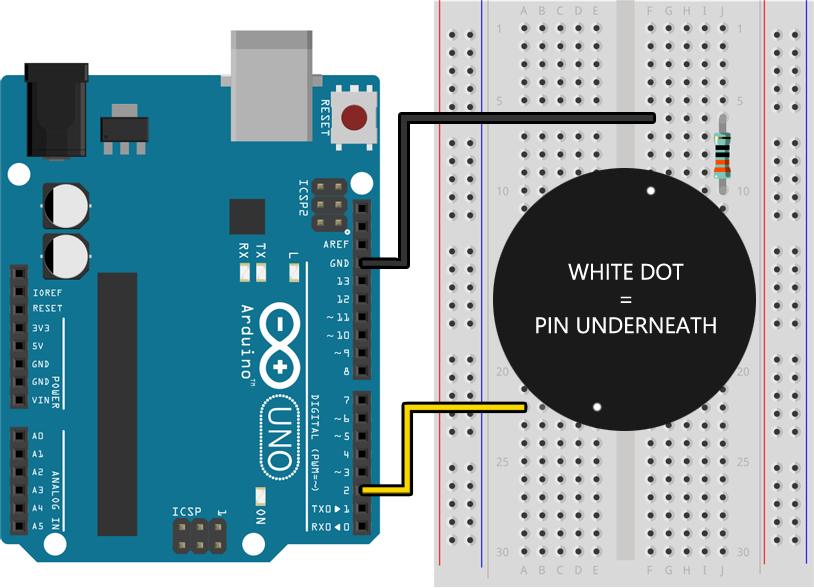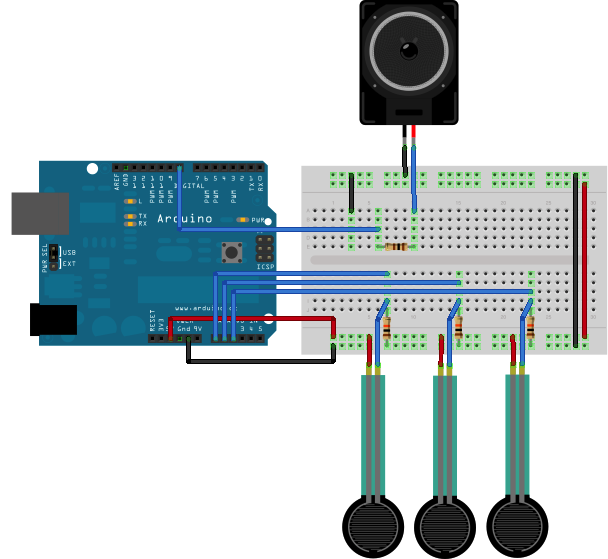
tone( pin number, frequency in hertz, duration in milliseconds)

Let’s talk about that third parameter we can pass to the tone() function – it is the duration of the tone in milliseconds. You can start a tone and do other stuff – while the tone is playing in the background.īut, back to that question, how can we separate the noise a little? tone() works independently of the delay() function. This is because the tone() function uses one of the built in timers on the Arduino’s micro-contoller.

We can try adding a delay(1000) after the tone(), but if you test this out, you will find it doesn’t get you anywhere. What if we want to add some space between the noise, so we can get a beat?
Arduino speaker code how to#
How to Separate the Noise – AKA Make a Beat You will notice that the higher the number, the higher the pitch that is created. *Tone needs 2 arguments, but can take threeĢ) Frequency - this is in hertz (cycles per second) which determines the pitch of the noise madeĪs an experiment, try changing the second argument in tone() to 100, 1000, 10000, 650000 and listen to the effect it has on the audio signal. Specify digital pin on the Arduino that the positive lead of piezo buzzer is attached. Here is a simple sketch demonstrating the tone() function: //A sketch to demonstrate the tone() function The frequency is an unsigned integer and can take a value up to 65,535 – but if you are trying to make tones for the human ear, then values between 2,000 and 5,000 are where our ears are most tuned. The pin number that you will use on the Arduino.Let’s address the two required items first: tone( pin number, frequency in hertz) The tone() function works with two arguments, but can take up to three arguments. The basics and more of using the tone() function Let’s go ahead and jump into the Arduino sketch. Connect the other lead to the 100 ohm resistor, and then to ground.The case of the buzzer may have a positive sign (+) on it to indicate the positive lead (if not, then the red wire usually indicates the positive lead). Using jumper wires, connect the positive lead to Arduino digital pin 8.Place the piezo buzzer into the breadboard, so that the two leads are on two separate rows.It’s painfully easy to set up a simple piezo speaker circuit with an Arduino. How to Set Up a Simple Piezo Speaker Circuit using Arduino I don’t know who comes up with this stuff, but they’re friggin’ mean. So basically, by shocking the plate over and over really fast, we can make noise. Again, the higher the frequency, the higher the pitch of the noise we hear. The faster you bend the material, the higher the pitch of the noise that’s produced.

By adhering a piezo-electric disc to a thin metal plate, and then applying electricity, we can bend the metal back and forth, which in turn creates noise.

It uses a material that’s piezoelectric, it actually changes shape when you apply electricity to it. It’s not like a regular speaker that you might think of. We are going to use a piezo buzzer to make some noise with Arduino.Ī piezo buzzer is pretty sweet.


 0 kommentar(er)
0 kommentar(er)
